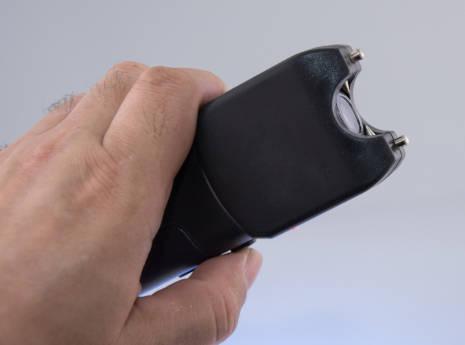Table of Contents
- Understanding the Legal Framework Surrounding Stun Gun Use
- Common Legal Defenses in Stun Gun-Related Cases
- How Evidence Impacts the Outcome of Stun Gun Incidents
- Practical Steps to Protect Your Rights After a Stun Gun Encounter
- In Conclusion
Understanding the Legal Framework Surrounding Stun Gun Use
When navigating the complexities of stun gun laws, it’s essential to recognize that regulations vary widely depending on jurisdiction. Some states fully permit civilian ownership and use of stun guns for self-defense, while others impose strict limitations or outright bans. Understanding local legal provisions ensures that you remain compliant and others’ safety rights are respected. Common legal considerations include possession restrictions, usage allowances, and specific conditions under which a stun gun may be deployed.
In assessing legal defenses related to stun gun incidents, courts often examine factors such as intent, proportionality, and context of use. For example, demonstrating that stun gun use was a reasonable response to an immediate threat can be critical to a viable defense. Key elements typically scrutinized include:
- Whether the device was legally owned or carried
- The nature and severity of the threat faced
- Compliance with local self-defense laws
- The duration and manner of stun gun deployment
Common Legal Defenses in Stun Gun-Related Cases
When facing stun gun-related charges, defense strategies often hinge on the context in which the device was used or carried. One of the most common arguments is self-defense, where the defendant claims the stun gun was employed as a necessary measure to prevent imminent harm. In such cases, proving that the use of the device was proportionate and justified under the circumstances can be pivotal. Another frequent defense involves challenging the legality of possession, particularly if the stun gun was carried in violation of state or local regulations.
Additionally, defendants may argue:
- The stun gun was not operational or was mishandled unintentionally.
- There was a lack of intent to cause harm or commit a crime.
- Procedural errors during arrest or evidence collection may have compromised the case.
Each of these defenses requires careful examination of the facts and applicable laws, underscoring the importance of skilled legal counsel in stun gun-related incidents.
How Evidence Impacts the Outcome of Stun Gun Incidents
In stun gun-related cases, the presentation and interpretation of evidence can dramatically sway the verdict. Critical components like video footage, witness testimony, and medical reports create a narrative that either supports or challenges claims made by both defense and prosecution. For instance, clear video evidence may corroborate a suspect’s assertion of self-defense, while contradictory witness statements can introduce reasonable doubt. The weight and reliability of physical evidence often become the linchpin in these situations, reinforcing whether the stun gun use was justified or excessive.
Key elements that influence evidence impact include:
- Chain of custody for the stun gun and related materials
- Objective medical assessments documenting injuries or lack thereof
- Time-stamped recordings that establish the sequence of events
- Consistency across witness accounts and expert analyses
Effective legal strategies hinge on meticulously dissecting this evidence to highlight inconsistencies or affirm lawful conduct. The defense’s ability to frame evidence within the context of legal standards often determines whether charges are dropped, reduced, or lead to acquittal. Consequently, understanding the nuances of how evidence shapes outcomes can empower defendants navigating these complex legal landscapes.
Practical Steps to Protect Your Rights After a Stun Gun Encounter
When facing the aftermath of a stun gun encounter, taking immediate and deliberate action is crucial to safeguarding your legal rights. First, document everything related to the incident-capture photographs of any injuries, record witnesses’ contact information, and write down your own account while details are fresh in your mind. This evidence can be invaluable for your defense and helps establish context should legal proceedings arise. Additionally, it is vital to remain calm and avoid making statements or admissions to law enforcement or third parties until you have consulted with an experienced attorney who understands the nuances of stun gun law in your jurisdiction.
Another critical step is to seek legal counsel promptly. Stun gun encounters can lead to complex legal challenges, including self-defense claims or allegations of misuse. A qualified lawyer will guide you in preserving your rights and navigating police inquiries, helping you understand your options and the potential consequences. Furthermore, refrain from deleting any digital evidence such as text messages, videos, or social media posts related to the event, as these can play a pivotal role in supporting your version of events. Remember, your proactive efforts in protecting your rights early on lay the foundation for a robust legal defense.
In Conclusion
In navigating the complexities of stun gun incidents, understanding your legal defenses is crucial. Whether you’re facing charges or simply want to be informed, knowing the nuances of self-defense laws, consent, and legality can make all the difference. Always consult a qualified attorney to evaluate your specific situation and ensure your rights are protected. Staying informed empowers you to respond wisely and confidently if ever confronted with legal challenges related to stun guns. Stay safe, stay informed, and remember that knowledge is your best defense.Check Our Other Blogs
- StunGun – Your Trusted Source for Stun Guns, Laws, and Self-Defense Tips
- PepperSprayLaws – Your Trusted Resource for Pepper Spray Information
- StunGunLaws – Your Trusted Guide to Stun Gun Legality and Safety



